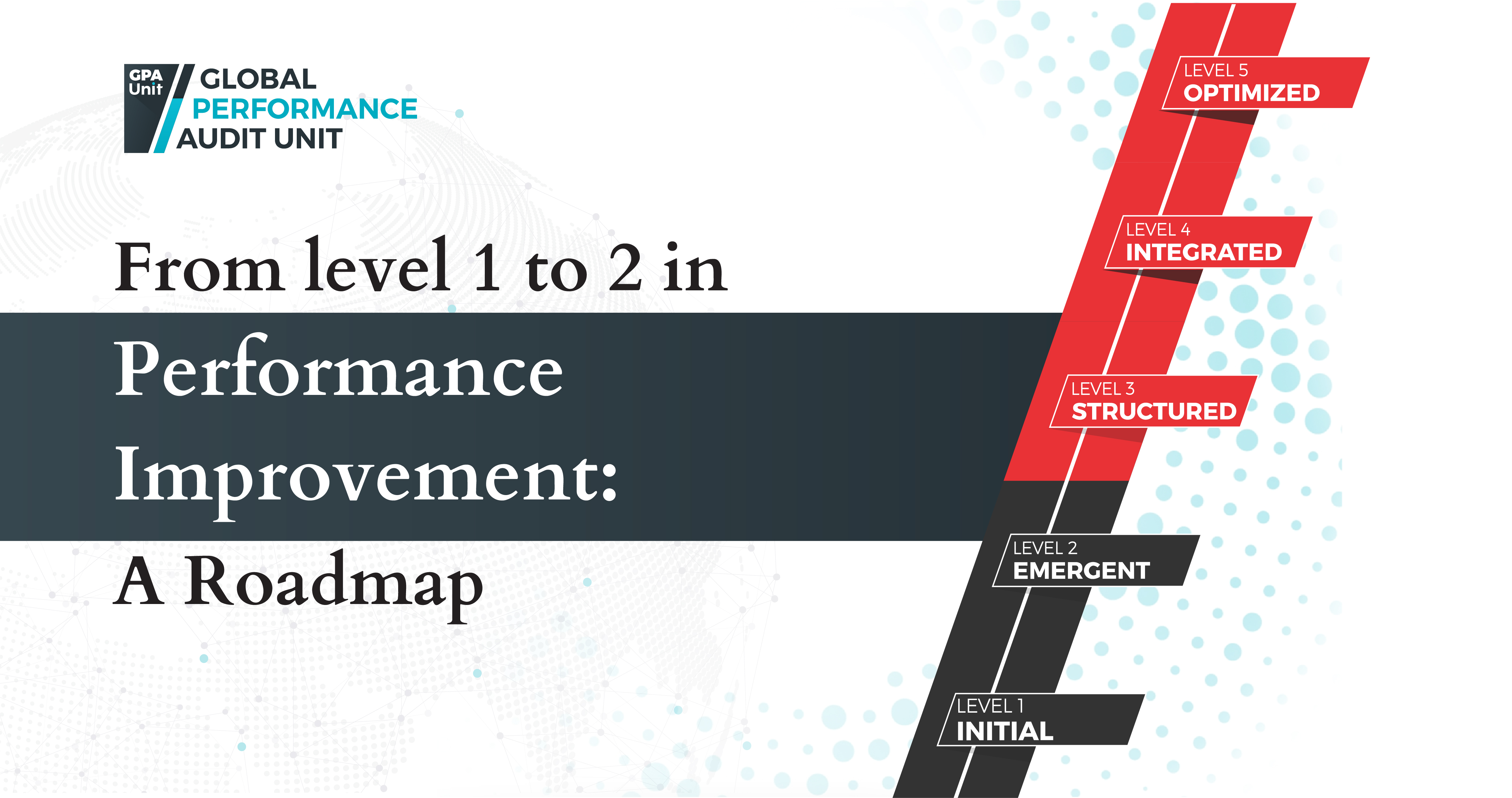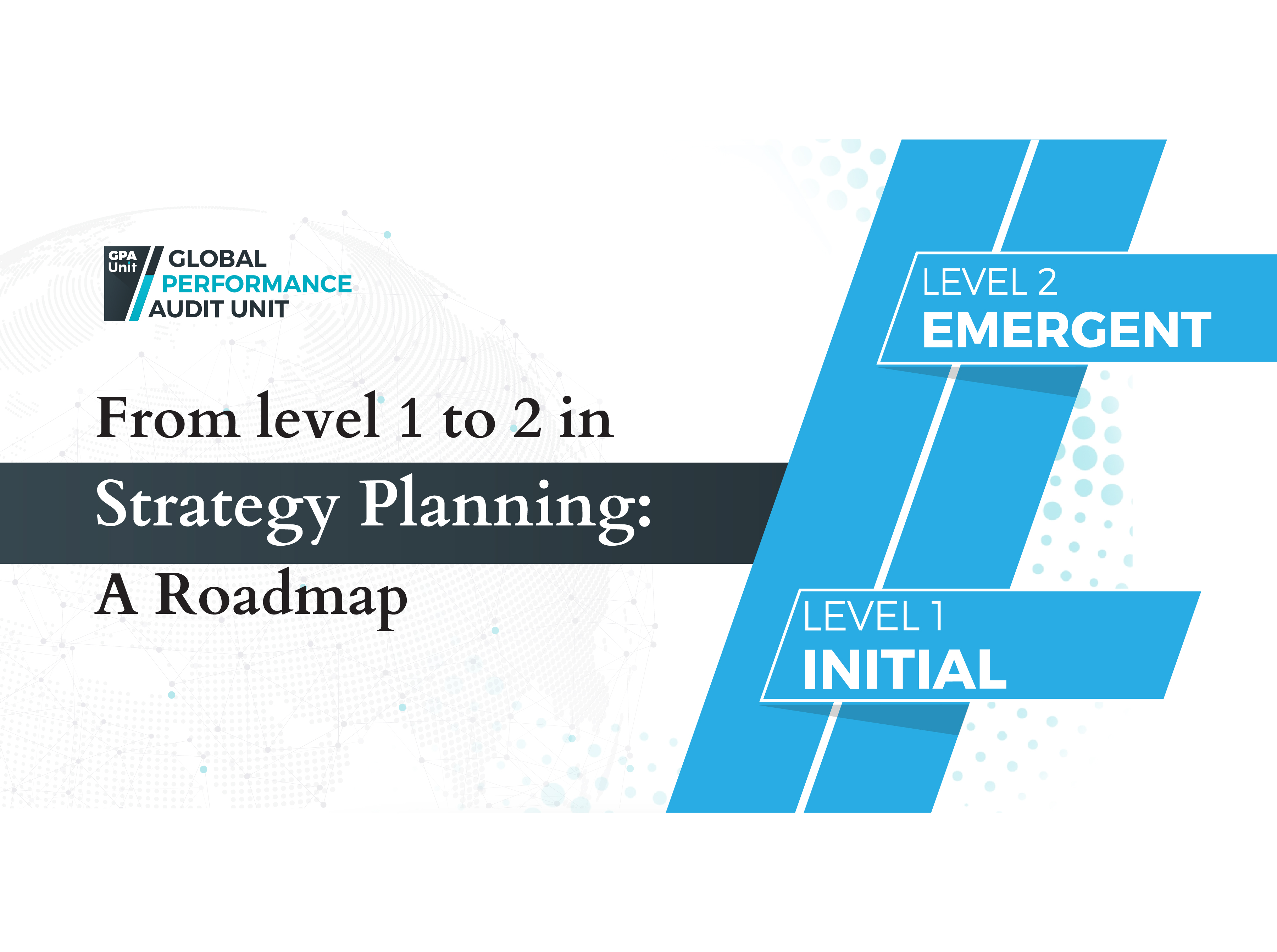From level 1 to 2 in Performance Improvement: A Roadmap

In our journey toward performance management maturity, we’ve already explored the foundational shifts required in Strategic Planning and Performance Measurement. These two capabilities lay the groundwork for clarity, direction, and the performance management systems they support. But identifying where you’re going and how you’re doing is only part of the equation. What truly drives change is what comes next: Performance Improvement. In many organizations, the promise of performance improvement is undermined by a simple but systemic reality: good intentions are not enough. While teams may react swiftly to underperformance or implement new initiatives with energy, these efforts rarely add up to sustained progress. Why? Because without structure, learning, or alignment, performance improvement remains reactive, fragmented, and difficult to scale.
This is the hallmark of Level 1 maturity: isolated fixes, uncoordinated projects, and a lack of organizational memory. Results may be tracked, but the real drivers of improvement—insight, ownership, and institutional learning—are missing.
Moving to Level 2 maturity marks the beginning of a different approach. It’s where improvement efforts begin to connect to performance data, where initiatives are named and tracked, and where learning is no longer accidental. It is still early in the maturity journey, but it’s a meaningful leap: from reaction to routine, from assumption to analysis.
This article outlines the key transitions organizations must make to move from Level 1 to Level 2 in Performance Improvement Maturity. It clarifies what’s missing at the initial stage and highlights the critical first signs that performance improvement is beginning to take root.
Level 1 and the illusion of momentum
Sometimes the idea of performance improvement is present in name but absent in practice. It shows up in strategy documents and internal speeches, but when you look beneath the surface, it dissolves into fragments—scattered initiatives, reactive decisions, and after-the-fact reporting that struggles to keep up with what’s actually happening.
Improvement efforts exist, but not as a system. Teams may respond quickly to problems, launching projects or drafting recommendations. But without structure or coordination, these actions rarely build on one another. There’s no shared method for capturing what was tried, what worked, or what should happen next. Projects live in departmental silos, decisions rely on anecdotes, and lessons—if identified—rarely travel beyond the team that experienced them.

Part of the problem is how organizations engage with performance data—if they do at all. Results might be monitored, but they’re not interpreted. Basic analysis, such as identifying patterns or measuring deviation from targets, is missing. In many cases, data is treated like a signal that something is wrong, but not as a resource for understanding why or how to improve.
The same disconnection appears in reporting. Documents are often prepared in response to requests, not as part of a structured cycle. Their purpose is more about compliance than clarity, and they fail to spark meaningful discussion. Leaders may review performance, but without a shared frame of reference, those conversations remain superficial. In the absence of routines, accountability fades, and improvement becomes reactive by default.
This lack of structure spills into initiative management. Projects are created in response to issues but lack standardization or strategic linkage. There is no central portfolio, no shared terminology, no way to see the big picture. When initiatives succeed, they aren’t scaled. When they fail, no one captures why.
Crucially, the organization doesn’t learn. Without systems to record lessons, track changes, or gather ideas from the front lines, improvement becomes repetitive instead of cumulative. The same discussions resurface. The same issues reappear. People know things aren’t working—but the system gives them no way to change course.
And underlying it all is a governance gap. There are few guidelines to shape how improvement should happen—no frameworks, no common tools, and little investment in training. In these conditions, progress depends not on the system, but on individuals. And when those individuals move on, momentum disappears with them.
Level 2: Making progress tangible
The journey to Level 2 maturity begins when improvement stops being incidental and starts becoming intentional. This stage isn’t defined by sophistication—it’s defined by structure. Organizations at this level introduce the basic scaffolding that allows them to learn from experience, coordinate their efforts, and connect improvement to strategy.
One of the first visible shifts is how performance results are treated. Instead of glancing at raw figures, teams start interpreting data. Even simple analysis—tracking averages or deviations—creates a habit of inquiry. Leaders begin to ask better questions, and conversations shift from “what happened” to “what should we do about it?” It's not advanced analytics, but it’s analysis with purpose.
At the same time, reporting becomes more deliberate. There may not be a full reporting framework, but reports begin to follow a rhythm. They’re produced for specific audiences, with clearer structure and a focus on performance rather than activity. These reports don’t just summarize—they support decisions.
That growing discipline feeds into decision-making. Performance reviews become more routine, and even if they’re basic, they start to anchor organizational discussions. Data enters the room earlier. Actions are documented. And improvement stops being something that happens “when there’s time”—it starts becoming part of how time is managed.
The improvement process also becomes more visible. Initiatives are named, documented, and logged—even if only partially. A few core elements (timeline, objective, status) are consistently captured. And crucially, initiatives are no longer floating free—they begin to connect to broader strategic goals. This shift brings coherence. It allows leaders to prioritize, monitor, and align efforts across teams.
Learning, too, begins to take shape. There may be a basic log for lessons learned or a shared drive where teams record what they’d do differently next time. A simple mechanism is introduced for staff to share ideas—maybe an inbox, a form, or a workshop. These steps signal something important: the organization doesn’t just act—it reflects.
Governance follows suit. Roles become clearer. A chapter on improvement may appear in the operations manual or be integrated into the broader performance management framework. Communication plans are drafted to ensure that both initiative progress and performance results reach the right people at the right time. Training is still limited, but no longer optional. Even a few hours of structured learning can begin to shift mindsets.
Together, these practices give shape to what was previously scattered. Improvement becomes more than a reflex. It becomes a recognizable system—one that can be sustained, repeated, and refined.
Benefits of reaching Level 2 maturity
Moving to Level 2 in Performance Improvement Maturity provides organizations with their first sense of operational confidence. With structured documentation, emerging data habits, and greater visibility into what’s being done and why, improvement efforts gain momentum—and meaning. At this level, leaders have access to more than scattered insights—they begin to see patterns. Performance discussions become grounded in evidence. Initiatives are easier to prioritize, track, and evaluate. Teams feel a greater sense of clarity, and small but steady learning loops begin to form.
Crucially, Level 2 also marks the moment when improvement efforts start aligning with strategy. Projects are no longer isolated or invisible—they are part of a broader performance narrative. This alignment enhances decision-making, increases ownership, and helps build a culture where progress is expected, not improvised.
The first steps towards structured improvement
With foundational practices in place—basic analysis, clearer project visibility, early learning routines—organizations create the conditions for performance improvement to evolve from isolated efforts to a shared capability. The journey is still early, but the direction is clear: toward a system that learns, adapts, and improves by design.
| DATE | June 04th, 2025 |
| Category | Blog Posts |
| Reading Time | 6 |




